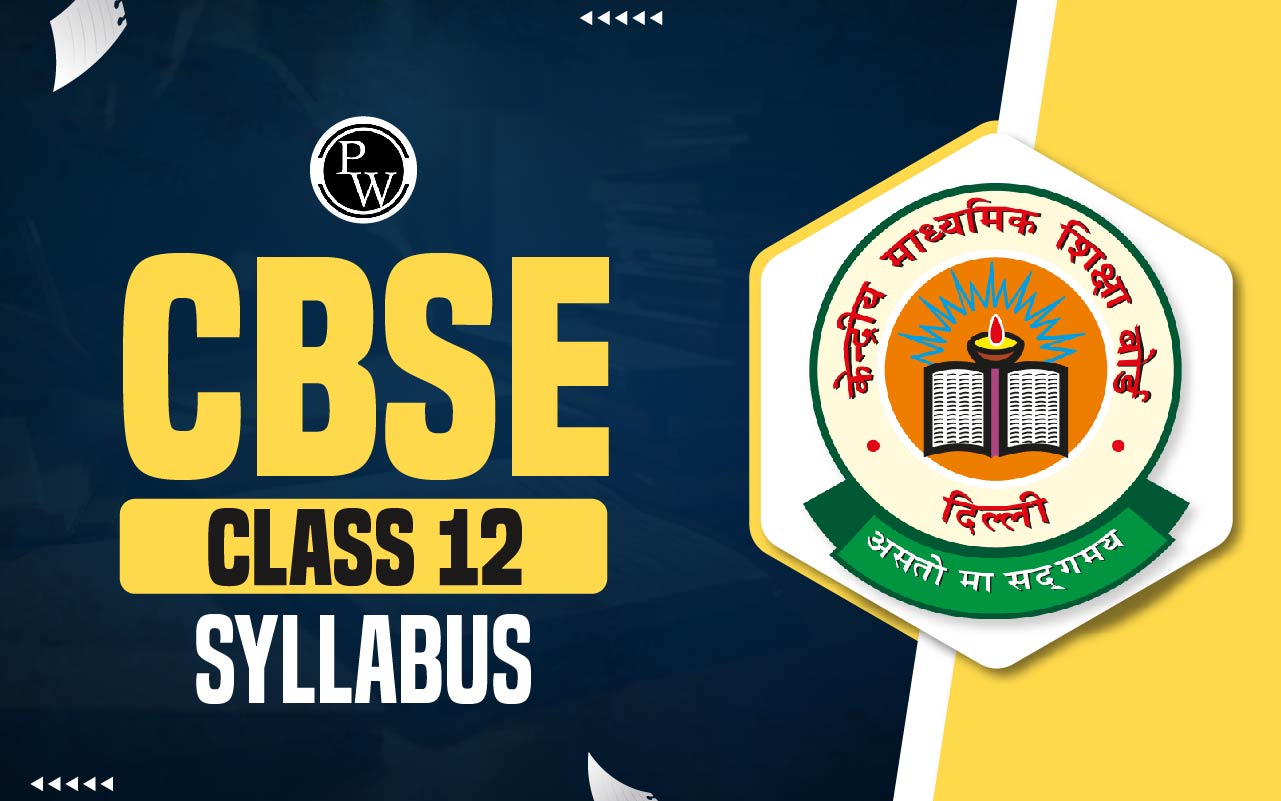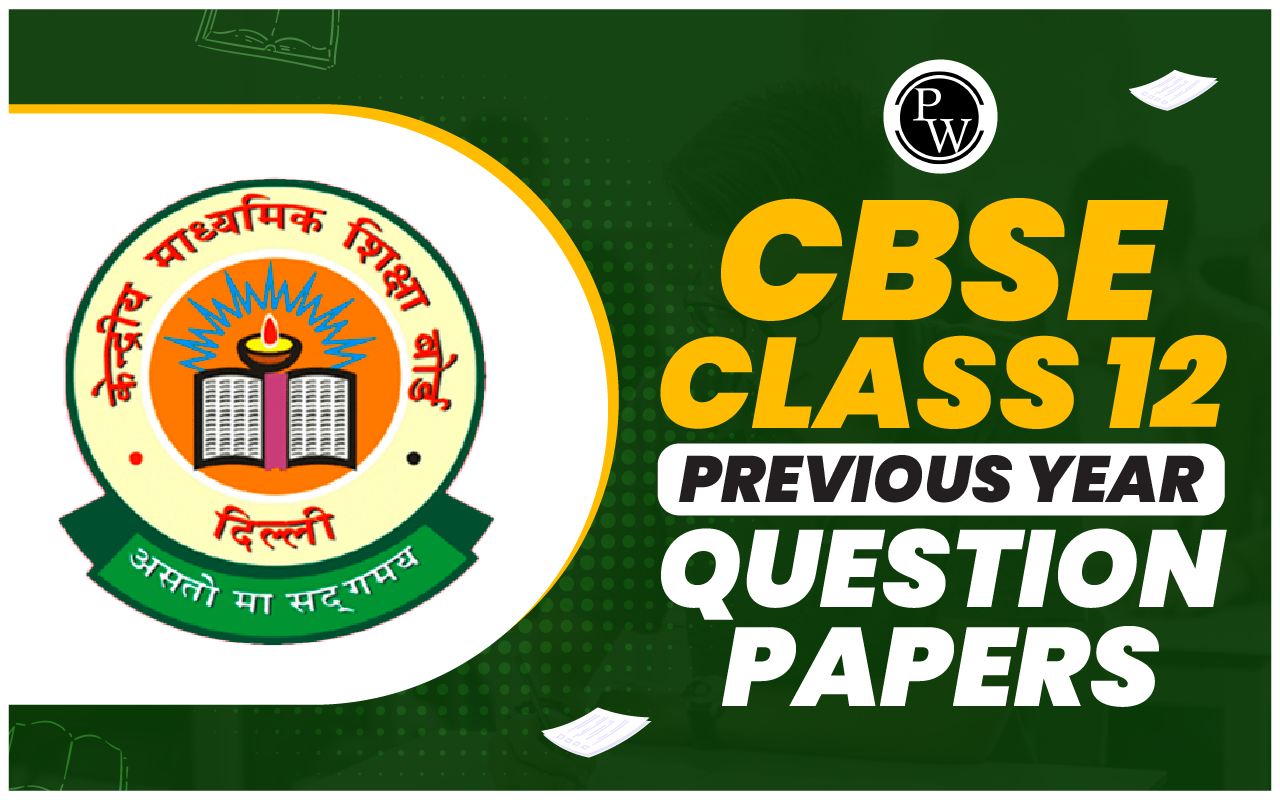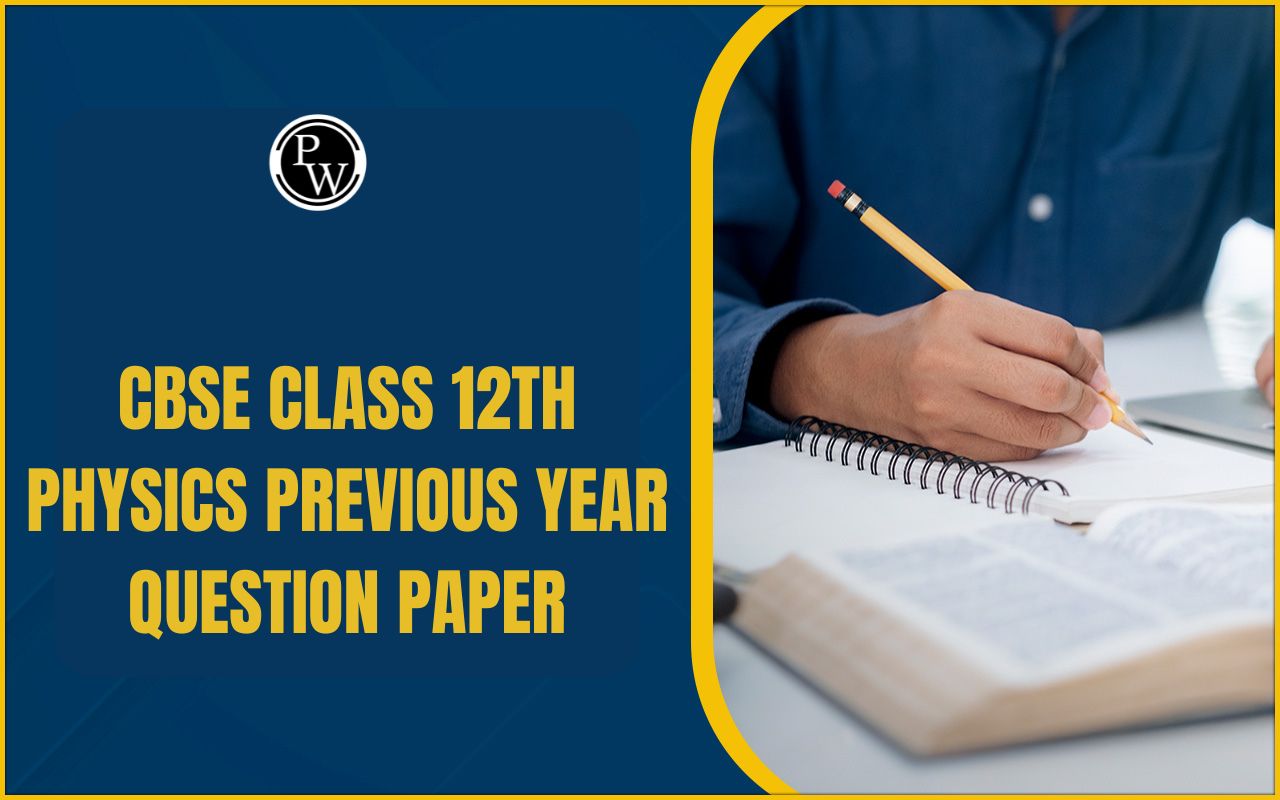
The CBSE Class 12 Chemistry Additional Practice Paper 2024 is a crucial resource for preparing for your CBSE Class 12 chemistry board exams. It's designed to give Class 12 CBSE students an idea of the types of questions they might encounter on the actual test, making it a helpful tool for exam practice.
You can now download the CBSE Class 12 Chemistry Additional Practice Paper 2024 from the official CBSE website. The page includes the CBSE Class 12 Chemistry Additional Practice Paper 2024, along with the marking scheme and solutions for the CBSE Practice Paper Class 12 2023-24.CBSE Class 12 Chemistry Additional Practice Paper 2024 Overview
The CBSE Class 12 Chemistry Practice Paper for the academic year 2023-24 is a very useful resource for students preparing for the Class 12 Chemistry board exam. The structure of this CBSE Chemistry Practice Paper for Class 12, 2023-24, closely resembles the actual exam, enabling students to get familiar with the exam format and practice answering questions in a similar manner. The CBSE Sample Paper for Class 12 Chemistry, 2023-24, is characterised by its division into three sections: Section A, Section B, and Section C. Engaging in these CBSE Class 12 Chemistry Practice Papers for 2023-24 helps students understand the question paper style and the marking process.CBSE Chemistry Practice Paper Class 12 2023 -24 PDF
Part A of the CBSE Chemistry Practice Paper for Class 12 (2023-24) contains multiple-choice questions (MCQs) aimed at testing the student's grasp of important Chemistry concepts. Part B comprises short-answer questions, prompting students to apply their understanding to address problems. Part C involves longer responses, where students need to provide detailed explanations of Chemistry principles and theories. Candidates can download the CBSE Class 12 Chemistry Practice Paper 2023-24 PDF with solutions and marking schemes from the official website| CBSE Class 12 Chemistry Additional Practice Paper | Download Here |
| CBSE Class 12 Chemistry Additional Practice Paper Solution | Download Here |
CBSE Class 12 Chemistry Additional Practice Paper 2024 With Solutions
Section – A
Here are multiple-choice questions where there is only one right answer for each. Each question is valued at 1 mark. There are no choices within the questions in this part. Question 1.Sunita arranged three cells like this:
She added an outside power to all three cells. The power is raised slowly until the opposite voltage reaches 1.1 V.
Which of the following statements is INCORRECT?
- Electrons flow from Zn rod to Cu rod hence current flows from Cu to Zn in case (P).
- The chemical reaction takes place in case (Q) till the opposing voltage reaches 1.1 V.
- Zinc is deposited at the zinc electrode and copper dissolves at copper electrode in case (P).
- Electrons flow from Cu to Zn and current flows from Zn to Cu in case (R).
Two substances, M and N, share the common formula CnH2nO but have distinct structural arrangements.
1. Compound N is part of a homologous series starting with the initial member having 3 carbon atoms.
2. Compound M, when combined with a monohydric alcohol in the presence of dry hydrogen chloride, forms a hemiacetal.
Identify the homologous series to which compounds M and N belong to?
- Both the compounds are aldehydes.
- Compound M is an aldehyde and compound N is a ketone.
- Both the compounds are ketones.
- Compound N is an aldehyde and compound M is a ketone.
In a quiz contest, team A and team B face a tiebreaker question about RNA characteristics. Here are their answers:
What is the likely outcome of the quiz and why?
- Team A emerges victorious because both responses are accurate.
- Team B secures the win since both responses are correct.
- Team A doesn't win the quiz due to Adrika's incorrect answer.
- Team B doesn't win the quiz because Rounak's response is wrong.
What happens to the hybridization of carbon when a nucleophile attacks the electrophilic centre of the carbonyl group?
- sp2 to sp
- sp3 to sp2
- sp3 to sp
- sp2 to sp3
Four substances, CH3Cl, CH3Br, C2H5Br, and C3H7I, are denoted as M, N, O, and P in the table provided (in no particular order). The table also includes their respective boiling points.
Which of the four compounds does ‘N’ most likely represent?
- CH3Cl
- CH3Br
- C2H5Br
- C3H7I
Study the graph given below.
Considering the chart provided, which element is MOST LIKELY to participate in the upcoming reaction?
Metal + conc. sulphuric acid Metal sulphate + sulphur dioxide + water
- Cu
- Co
- Ti
- Zn
The table below displays the outcomes of three experiments concerning how fast compounds P and Q react at a steady temperature.
Based on the data, what will be the rate equation for the reaction between P and Q?
- k[P]2[Q]
- k[P][Q]2
- k[P][Q]
- k[P]
The chart displays KH values for certain gases at 293 K and under the same pressure. Can you identify the arrangement where the gases are listed based on their decreasing solubility, from left to right?
- Helium > Nitrogen > Hydrogen > Oxygen
- Hydrogen > Helium > Nitrogen > Oxygen
- Nitrogen > Hydrogen > Oxygen > Helium
- Oxygen > Hydrogen > Nitrogen > Helium
Sampriti chose four acids. Assist her in arranging the acids from left to right based on their increasing acidity.
2, 4, 6 – Trinitrophenol, acetic acid, phenol, and benzoic acid.
- 2, 4, 6 – Trinitrophenol, acetic acid, benzoic acid, phenol
- phenol, acetic acid, benzoic acid, 2, 4, 6 – Trinitrophenol
- 2, 4, 6 – Trinitrophenol, benzoic acid, acetic acid, phenol
- phenol, benzoic acid, acetic acid, 2, 4, 6 – Trinitrophenol
An archaeologist discovered that the carbon-14 in a wooden object is only 20% of what it originally had when the wood was taken from the tree. Can you estimate the age of this wooden item?
(Given the half-life of carbon-14= 5730 years)
- 5,790 years
- 12,060 years
- 13,300 years
- 38,000 years
Sourima had a strong headache. She used medicine to ease her pain. The medicine is made in factories by:
- mononitration of phenyl methanoate
- acetylation of salicylic acid in the presence of an acid
- hydrogenation of anisole with Br2 in ethanoic acid
- nitration of anisole with a mixture of concentrated sulphuric and nitric acids
Which of these choices provides the accurate order of the atomic sizes for the 3d, 4d, and 5d transition series of elements?
- atomic radii of 3d < atomic radii of 4d < atomic radii of 5d
- atomic radii of 3d < atomic radii of 4d ≈ atomic radii of 5d
- atomic radii of 3d ≈ atomic radii of 4d > atomic radii of 5d
- atomic radii of 3d > atomic radii of 4d > atomic radii of 5d
Two statements are provided below – one called Assertion (A) and the other labelled Reason (R).
Assertion (A): When hydrogen iodide reacts with 2-Methoxy-2-methyl propane, methyl alcohol and 2-Iodo-2-methylpropane are formed. Reason (R): The reaction mentioned in (A) occurs through SN2 mechanism. Which of the following is correct?- Both A and R are true, and R is a correct explanation of A.
- Both A and R are true, but R is not the correct explanation of A.
- A is true, but R is false.
- A is false, but R is true.
Assertion (A): In acetaldehyde, the carbon atom in the carbonyl group acts like a Lewis acid, while the oxygen atom in the carbonyl group acts as a Lewis base.
Reason (R): Carbonyl compounds show significant dipole moments.
Which of the following is accurate?
- Both A and R are true, and R is a correct explanation of A.
- Both A and R are true, but R is not the correct explanation of A.
- A is true, but R is false.
- A is false, but R is true.
Two statements are presented below – one marked as Assertion (A) and the other as Reason (R).
Assertion (A): Changing protein's primary structure does not happen during denaturation.
Reason (R): The bonds between carbon and hydrogen atoms stay the same when proteins undergo denaturation.
Which of the following is correct?
- Both A and R are true, and R is the correct explanation of A.
- Both A and R are true, but R is not the correct explanation of A.
- A is true, but R is false.
- A is false, but R is true.
Assertion (A): When copper reacts with dilute sulfuric acid, it does not produce copper (II) sulphate.
Reason (R): The standard potential for the Cu+2|Cu electrodes are negative.
Which of the following is correct?
- Both A and R are true, and R is a correct explanation of A.
- Both A and R are true, but R is not the correct explanation of A.
- A is true, but R is false.
- A is false, but R is true.
Section – B
Question 17.Given below is a graph of the concentration of reactant vs. time for a reaction.
- Using the provided graph, create a graph that shows the rate of reaction in relation to the concentration of the reactant for the same reaction.
- Determine the order of the reaction and provide reasoning for your answer based on the information given.
'Colligative properties assist in finding out the molar masses of solutes.'
Which method is favoured for determining the molar masses of biomolecules based on colligative properties, and why is it preferred over other methods?
Question 19.Which of the two compounds, CH3CH2CH2Cl or C6H5Cl, will have a longer C-Cl bond? Explain the reason for your choice.
Question 20.Match the items in the 'Reactants' column with the ones in the 'Product' column accurately.
ORHydrogen cyanide in water reacts with propanone and ethanal separately. Which reaction will be faster, and why?
Question 21.Glucose does not give a positive result with the Schiff’s reagent in the Schiff’s test. Based on the above information –
- Give a reason for the observation.
- What type of carbonyl group is present in a glucose molecule?
Section – C
Question 22.A metal (M) makes two kinds of compounds, O and P, with two different ligands. Compound O has the Cl- ligand, and compound P has the CN- ligand. The metal M has 4 electrons in the d orbital. Fill in the table below using the information provided:
Question 23.Abhisrija arranged two setups P and Q as shown below.
Both trials are conducted at a temperature of 25°C.
- Identify the current carriers in arrangements P and Q.
- Describe the impact of a rise in temperature on the conductivity of NaCl solution and Cu wire.
- Explain the changes in the chemical composition of NaCl and Cu wire when current is passed through both setups for a prolonged period of time?
Draw the structure of:
- 3-Methylphenol
- 2,4,6-Trinitrophenol
- Benzene-1,3-diol
- If we organise acetaldehyde, propane, propanone, acetic acid, and ethyl alcohol based on their boiling points, which two substances are anticipated to be in the third and fourth spots?
- The resonance structures of the carboxylic acid group are displayed below. Which one is the most stable, and what's the reason behind it?
- Create a balanced equation for the interaction of glucose and hydrogen cyanide. What conclusion can we make from this?
- Samta mixed glucose with acetic anhydride. Can this reaction assist her in figuring out the count of secondary alcoholic groups and primary alcoholic groups in a glucose molecule? Explain your response.
Three sets of pairs (i) and (ii) of SN1 reactions are provided below. For each set of reactions, indicate which reaction (i) or (ii) is likely to be slower. Explain your answer.
(a) (i) (CH3)3CCl + CH3CH2O- (CH3)3COCH2CH3 +Cl-[In presence of ethanol] (ii) (CH3)3CCl + 2 CH3CH2O- (CH3)3COCH2CH3 +Cl-[In presence of ethanol] (b) (i) (CH3)3CCl + H2O (CH3)3COH + HCl (ii) (CH3)3CBr + H2O (CH3)3COH + HBr (c) (i) (CH3)3CCl + H2O (CH3)3COH + HCl (ii) C6H5Cl + H2O C6H5OH + HCl Question 28.- List four ways to enhance the speed of a reversible reaction going forward.
- Specify the unit for reaction rate in the SI unit system.
Section – D
Question 29.Transition metal complexes show a variety of colours, which is a unique feature. This means that when white light goes through the sample, some colours from the visible spectrum are taken out. As a result, the light coming out is not white anymore. The colour of the complex is opposite to the one absorbed. For instance, if the complex absorbs green light, it looks red.
The colour of a coordination compound is influenced by two things:
- The presence of ligands: For example, anhydrous CuSO4 is white, but CuSO4.5H2O is blue.
- The type of ligands: When ligands like 'en' are added to [Ni(H2O)6]2+ in different ratios (en: Ni, 1:1, 2:1, 3:1), a series of reactions occur, leading to changes in colour.
- Provide an instance of another compound that displays characteristics akin to those observed in the Cu compound mentioned earlier. What is the shape of the central metal atom in this compound?
- What kind of ligand is introduced to [Ni(H2O)6]2+ above to illustrate the impact of ligands on the colours of complex compounds?
Conductivity measurements are commonly used in various industries and environmental contexts to quickly, inexpensively, and reliably assess the ionic content in a solution.
For instance, checking conductivity is a usual method for observing and continuously tracking the effectiveness of water purification systems. Often, conductivity is directly related to total dissolved solids (TDS). High-quality deionized water typically has a conductivity of approximately 5 × 10-6 S/m at standard temperature and pressure (STP). Regular drinking water usually falls within the range of 0.02–0.08 S/m, while seawater measures around 5 S/m.
Research suggests that TDS in fresh water can be estimated using the formula TDS (mg/L) = 104 × 0.65 × conductivity (S/m). For a sample of water from a borewell with a conductivity of 0.13 S/m at STP, a conductivity cell is fashioned. The resistance of the cell is determined to be 10 ohms.
- What is the cell constant for the cell mentioned earlier?
- How much Total Dissolved Solids (TDS) is present in the water sample collected?
- Research suggests that a TDS level of 250 mg/L indicates suitable drinking water. What would be the conductivity of a water sample with this TDS level? If this water was created by diluting the mentioned sample, what would be the resistance of a conductivity cell made from it?
OR
If the resistance of a cell made from diluting the sample of water taken above was found to be 79 ohms, calculate the TDS of the new sample.Section – E
Question 31.Answer any five questions with respect to the series of ions given below:
Sc+3, Ti+4, V+4, V+2, Cr+2, Fe+3, Ni+2,Cu+2, Zn+2
- Which of these ions have the same number of electrons?
- How come solutions of Sc+3, Ti+4, and Zn+2 in water don't show any colour?
- Identify the ion(s) in the list that are/are not transition element(s) and explain why.
- Cr makes two kinds of oxides – Cr+2 and Cr+3. Which one is likely to change red litmus to blue?
- Put these ions in order from least to most magnetic moments: Sc+3, V+2, V+4, Ni+2.
- What's the reason why most alloys are made from transition metals?
- Name the ion that can also exist in a +1 oxidation state.
[Atomic number of: Sc =21, Ti =22, V =23, Cr=24, Fe=26, Ni=28, Cu=29, Zn=30]
CBSE Class 12 Chemistry Additional Practice Paper 2024 FAQs
Are there any mobile apps specifically designed for Class 12 Chemistry practice?
How can I stay calm and focused during the last-minute revision for the exam?
Are there any important formulas or equations I should memorise for the Class 12 Chemistry exam?
What role do mock tests play in Class 12 Chemistry exam preparation?
Can I use online platforms to clarify doubts and get additional assistance with Class 12 Chemistry?










